- Shop
New to UCAN?
- About
- How to use ?
- Energy Lab
- Contact us
Protein Shake Before Bed: A Coach’s Guide to Overnight Recovery
Contents
- 1 Protein shakes before bed: how to turn your sleep into a recovery session
- 1.1 The Overlooked Secret to Peak Performance
- 1.2 How Your Body Recovers While You Sleep
- 1.3 Choosing the Right Protein for Overnight Repair
- 1.4 Simple and Effective Pre-Bed Shake Recipes
- 1.5 Busting the Big Pre-Sleep Nutrition Myths
- 1.6 Integrating Overnight Recovery into Your Training Plan
- 1.7 FAQ: Your Questions on a Protein Shake Before Bed
- 1.8 References
Protein shakes before bed: how to turn your sleep into a recovery session
Downing a protein shake before bed isn’t just for lifters — for serious Aussie endurance athletes it’s a targeted intervention that converts 7–9 hours of sleep into productive repair time. Within the first 100 words: a casein-rich or slow-release protein shake taken 30–60 minutes before lights-out supplies amino acids for overnight muscle protein synthesis (MPS), reduces morning DOMS and helps you maintain training intensity through multi-day blocks. Use this coach-led guide to know exactly what to do, why it works, and how to apply it around Sydney, Melbourne and race weeks like Gold Coast Marathon or Ironman Cairns.
The Overlooked Secret to Peak Performance
For an endurance athlete, training load is only half the equation — the other half is recovery quality. Sleep is a massive, underused window: 7–9 hours where your body prioritises repair, glycogen repletion and neuromuscular recovery. A well-timed protein shake before bed is a low-friction way to turn that passive time into active adaptation.
What to do: After your hardest sessions (e.g., a 10×800 m track night or a 3–4 hour long ride at Tempo pace), have a 20–40 g slow-digesting protein dose 30–60 minutes before bed. Aim 20 g on lighter hard sessions, 30–40 g when the session causes significant muscle damage (hill repeats, long threshold sets).
Why it works: Overnight is when MPS runs most efficiently if substrate (amino acids) is available. Supplying sustained amino acids prevents overnight catabolism and supports net positive protein balance, which is the mechanism behind improved strength and endurance adaptation.
How to apply (in Aussie race context): In peak weeks before Sydney or Melbourne marathons, schedule pre-bed protein on nights following interval sessions, long runs with marathon pace blocks, and back-to-back long weekends. For Ironman athletes, use it after long bricks and high-load sessions that include significant eccentric muscle stress (running off the bike).
Key Tip: Think of a pre-bed protein shake as hiring a night-shift repair crew. Give them steady building materials (amino acids) and they’ll rebuild muscle while you sleep — miss that supply and the crew slows or stops.
Why This Matters for Endurance Athletes
When training volume is high, recovery is the limit. Here are the high-value outcomes that a targeted pre-sleep protein strategy delivers:
- Maximises Muscle Repair: A slow-release shake supplies a continual stream of amino acids to sustain MPS overnight.
- Reduces Morning Soreness: Less DOMS means you can hit quality sessions sooner and maintain session intensity over a training week.
- Prevents Muscle Breakdown: Stops overnight catabolism that erodes power-endurance, especially during multi-day hard blocks.
- Improves Training Adaptation: Supports better retention of power and running economy through consistent repair and remodelling.
How Your Body Recovers While You Sleep
Sleep isn’t passive downtime — it’s the primary window for hormonal regulation, glycogen reconsolidation and tissue repair. Each hard session (e.g., 5×5 min VO₂ max efforts or a hilly 3-hour ride) leaves microscopic structural damage and depletes substrate. Overnight, MPS acts to repair and strengthen those fibres — but only if amino acids are available.
What to do: Time your protein so digestion begins before lights-out (30–60 minutes). On sessions that cause high eccentric load (long downhill runs, tempo-offs), favour the upper end of the dose range (30–40 g).
Why it works: MPS requires essential amino acids — leucine in particular — as a trigger. A sustained supply keeps translation active through the sleep cycle, increasing net protein balance. Studies show pre-sleep protein increases overnight MPS versus placebo. [1]
How to apply: Use pre-sleep protein strategically on nights after key hard sessions. On recovery runs or easy spins, rely on daily meals and skip the nightly shake to keep calories in balance.
The Problem with an Overnight Fast
A long, true fast across sleep can allow blood amino acids to fall below the threshold for MPS. That opens two problems: stalled repair and a shift toward a modest catabolic state where the body salvages amino acids from existing muscle.
What to do: Prevent that dip with 20–40 g of a slow-digesting protein (see choice guidance below).
Why it works: The steady plasma amino acid concentration from slow proteins maintains MPS and prevents the body switching to muscle protein breakdown as an amino acid source.
Providing a slow-release protein before bed flips the overnight balance toward anabolic repair instead of catabolic breakdown.
Fuelling the Repair Process All Night Long
The practical aim is a steady amino acid drip for the full 6–8 hours of sleep. That’s exactly what casein and some blended slow-release proteins do.
Evidence snapshot: multiple controlled trials show that protein ingestion before sleep increases overnight MPS and improves net protein balance versus no protein — one commonly cited controlled trial reported up to ~22% higher overnight MPS with pre-sleep protein. [1]
What to do: Use 20–40 g slow-release protein on the nights after intense sessions (tempo runs, intervals, bricks) or during multi-day training loads.
How to apply: If you train late afternoon/evening and have a short window between session end and bed, prioritise a small, easily digestible protein shake rather than a heavy meal. This preserves sleep quality while delivering amino acids.
This sustained recovery yields:
- Improved muscle quality — better force production and fatigue resistance on repeat efforts.
- Enhanced endurance — consistent training intensity across weeks, which raises VO₂ max and lactate threshold over time.
- Reduced injury risk — repaired tissues tolerate load better, especially in late-season race peaking.
For athletes targeting events such as the Gold Coast Marathon or Ironman Cairns, this is not optional — it’s a reliable, low-cost strategy that improves the likelihood of hitting training targets and showing up to race day fresh.
Choosing the Right Protein for Overnight Repair
Not all proteins behave the same. The coaching principle: match the protein type to the recovery window. For overnight repair you want a slow-release profile.
The Sprinter vs. The Marathon Runner Protein
Whey is a rapid digester — great immediately post-session when you need a fast amino acid spike to start MPS and replete plasma amino acids. Casein forms a gastric gel slowing gastric emptying, supplying amino acids over 6–8 hours — ideal for sleep. Blended formulas combine both benefits but ensure a slow component for overnight use.
What to do: Use whey immediately post-session (within 30 min). Use casein or a tailored slow-release blend ~30–60 min before bed on targeted nights.
Why it works: Casein’s sustained release supports longer MPS activation, aligning with the sleep window. Blends can provide a quick stimulus and sustained release if timed correctly.
How to apply: If you only have one product on race week, choose a slow-release blend for the evening. If you have both, split use: whey post-effort, casein at night.
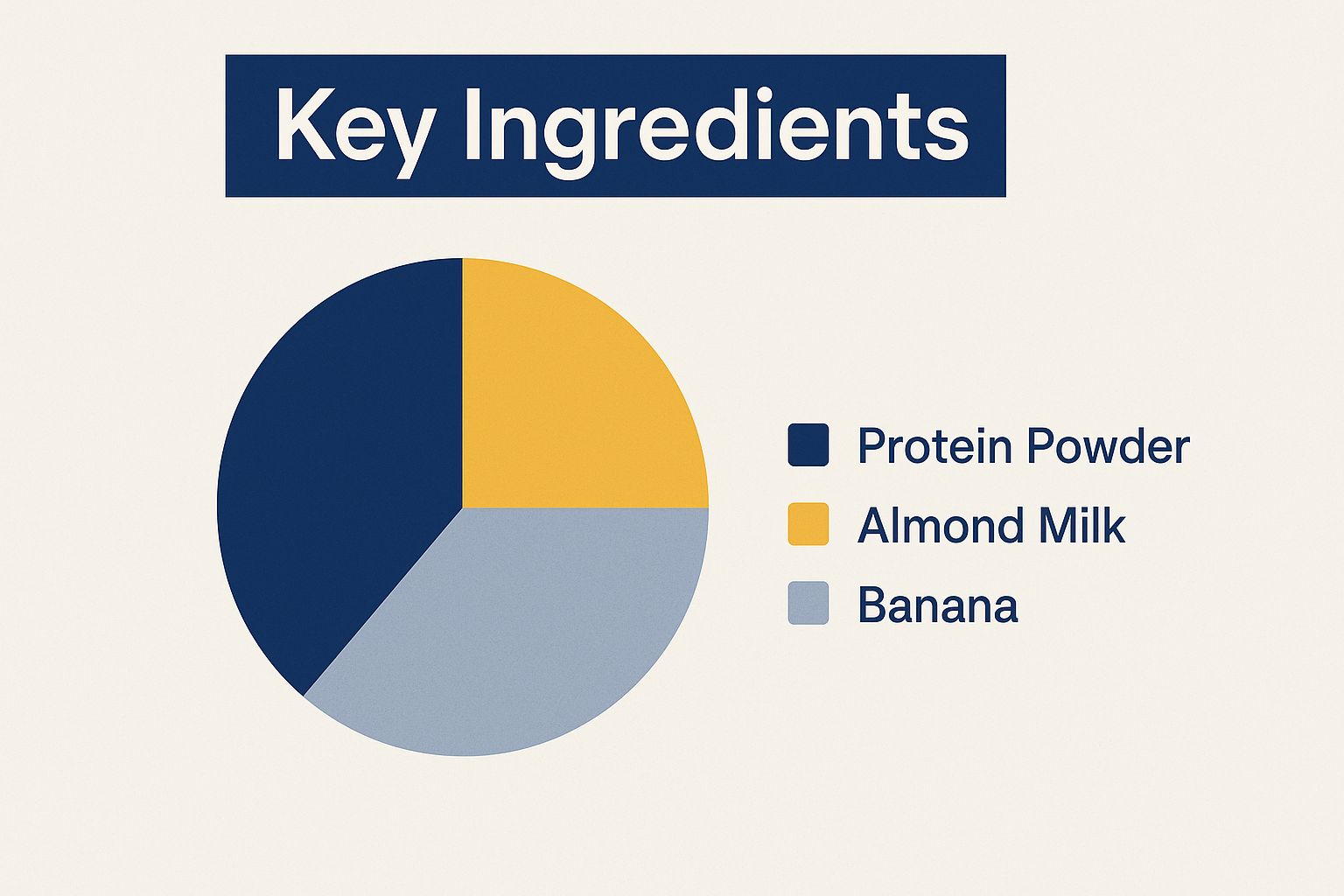
Comparing Pre-Bed Protein Sources
Quick comparison to guide selection (table preserved):
| Protein Type | Digestion Speed | Best Use Case | Amino Acid Release |
|---|---|---|---|
| Whey | Fast | Post-workout | Rapid, short-lived spike |
| Casein | Slow | Before bed | Steady, sustained for 6-8 hours |
| Blended | Mixed | Versatile, including pre-bed | Combination of fast and slow release |
The UCAN Advantage: Sustained Fuel for Recovery
UCAN Energy + Protein is formulated to match the coach’s brief for evening recovery: a protein blend engineered for steady amino-acid delivery alongside low-glycaemic, sustained carbohydrate (LIVSTEADY™) to support restorative processes without spiking glucose. Practically, that means less sleep disruption and a steady substrate supply for repair.
How to use UCAN in training: for a late-evening interval session, use a UCAN Energy Gel 15–30 minutes before the session to stabilise glucose for the workout, and follow with whey or a mixed recovery drink post-session if needed. Then have UCAN Energy + Protein before bed on the nights you need sustained overnight repair. 👉 Shop UCAN Energy + Protein
How Much Protein Do You Really Need Before Bed?
Practical dose guidance used by sports dietitians: 20–40 g of slow-digesting protein before sleep. Use 20 g after moderate hard days, 30–40 g after heavy sessions (long runs, high-eccentric efforts, back-to-back days). This range balances stimulus for MPS against gastric comfort and total daily energy.
Where to buy quality options: reliable brands, third-party tested products and our UCAN Energy + Protein are relevant choices for athletes who want exact dosing and a gut-friendly formula. 👉 Shop UCAN Energy Gels
Simple and Effective Pre-Bed Shake Recipes
Timing: 30–60 minutes before bed. Keep recipes simple and easy to digest — you want sleep, not a food coma.
The Lean Recovery Shake
- How to make it: Mix one scoop of UCAN Energy + Protein with 300–400 ml cold water. Shake 30–60 minutes before bed.
- Why it works: Delivers slow-release protein without extra fat or heavy carbs — light on the gut but effective for overnight MPS.
- When to use it: Default nightly shake after moderate–hard sessions during a heavy training block.
The Glycogen Top-Up Shake
- How to make it: Blend one scoop UCAN Energy + Protein (Vanilla) with 300 ml milk (dairy or fortified plant milk) + ½ small banana.
- Why it works: Milk adds casein; the banana supplies a small, quick carb hit to help overnight glycogen repletion when you’ve done evening sessions that deplete stores.
- When to use it: After late long runs, double sessions, or when you need a small overnight top-up before an early hard session the next morning.
The Plant-Based Repair Shake
- How to make it: Mix one scoop of a high-quality pea+rice blend with 350 ml unsweetened soy or almond milk.
- Why it works: Modern plant blends can be formulated to offer extended amino-acid release and a complete amino acid profile when combined (pea+rice).
- When to use it: Vegan or lactose-intolerant athletes who need nightly support during heavy training blocks.
Coach’s Tip: Keep fruit to a small portion. Extra nuts, seeds or too much added fat will slow digestion and can affect sleep. Stick to the skeletal recipe and adjust if you notice sleep disruption.
Busting the Big Pre-Sleep Nutrition Myths
We keep this direct — here are the common objections, and the performance-first facts.
Myth 1: “It Will Make Me Gain Fat”
Reality: Fat gain is driven by chronic energy surplus, not a single small shake. A 20–40 g protein shake is ~120–180 kcal. If it fits your daily plan and replaces inferior late-night snacks, it helps performance and body composition simultaneously.
Myth 2: “It Will Wreck My Sleep”
Reality: A light, liquid, slow-release protein is gentle on the gut for most athletes. In some individuals tryptophan-containing proteins may even aid sleep. If a formula disturbs you, switch volume or timing (45–60 min before bed) or choose water vs milk base. [2]
Myth 3: “That’s Just for Bodybuilders”
Reality: Endurance training produces as much structural muscle damage from volume and eccentric loading as resistance training. Overnight repair matters for runners, triathletes and cyclists all the same. This strategy is about resilience and adaptation, not bulk.
Integrating Overnight Recovery into Your Training Plan
Use pre-sleep protein strategically — not nightly. Think of it as a tool for the heaviest days and the weeks when you want adaptation without losing quality.
Timing Your Recovery for Maximum Gains
What to do: In a weekly microcycle, plan pre-sleep protein on the 2–3 nights that follow your highest-load workouts (e.g., Tuesday intervals, Saturday long, Sunday long run/ride). This matches recovery input to demand.
Why it works: This selective approach prevents unnecessary calories on light days while concentrating repair capacity when the body needs it most.
How to apply: During a 3-week build into a marathon, schedule pre-sleep protein the nights after your long run and your long threshold or marathon-pace session. For Ironman buildup, use it after the longest bricks and the highest-volume bike days.
A Powerful Tool for Masters Athletes
Older athletes face sarcopenia risk; nightly casein is an evidence-backed strat to help preserve muscle. Studies in older adults show overnight protein boosts MPS and helps maintain lean mass with resistance stimulus. [3]
FAQ: Your Questions on a Protein Shake Before Bed
Can I Just Eat Food Instead of Drinking a Protein Shake?
Yes. Whole-food options that mimic casein’s slow-release profile — e.g., cottage cheese, Greek yoghurt or a small serving of ricotta — work well. A UCAN Energy + Protein shake is convenient, provides exact dosing and tends to be lighter pre-sleep. UCAN Energy + Protein
Will a Protein Shake Before Bed Help Me Lose Weight?
It can assist weight management by increasing satiety and preserving lean mass during calorie-controlled phases. But it’s not a standalone fat-loss tool — energy balance still rules.
Should I Be Having a Pre-Bed Shake Every Single Night?
No — use it as a tactical recovery tool on the nights your training load demands it. On recovery weeks or rest days, regular meals suffice.
References
[1] Res, P. T., Groen, B., Pennings, B., et al. (2012). Protein ingestion before sleep improves postexercise overnight recovery. Medicine & Science in Sports & Exercise, 44(8), 1560–1569.
[2] St-Onge, M. P., Mikic, A., & Pietrolungo, C. E. (2016). Effects of Diet on Sleep Quality. Advances in Nutrition, 7(5), 938–949.
[3] Kouw, I. W. K., Senden, J. M. G., Gijsen, A. P., et al. (2017). Protein ingestion before sleep increases overnight muscle protein synthesis rates in healthy older men: A randomized controlled trial. The Journal of Nutrition, 147(12), 2252–2261.
Ready to turn your sleep into a reliable recovery tool? UCAN’s Energy + Protein was developed with sustained recovery in mind — slow-release protein plus LIVSTEADY™ carbohydrate to support overnight repair without a sugar spike. 👉 Shop UCAN Energy + Protein
Author: Generation UCAN | Last updated: 29 September 2025

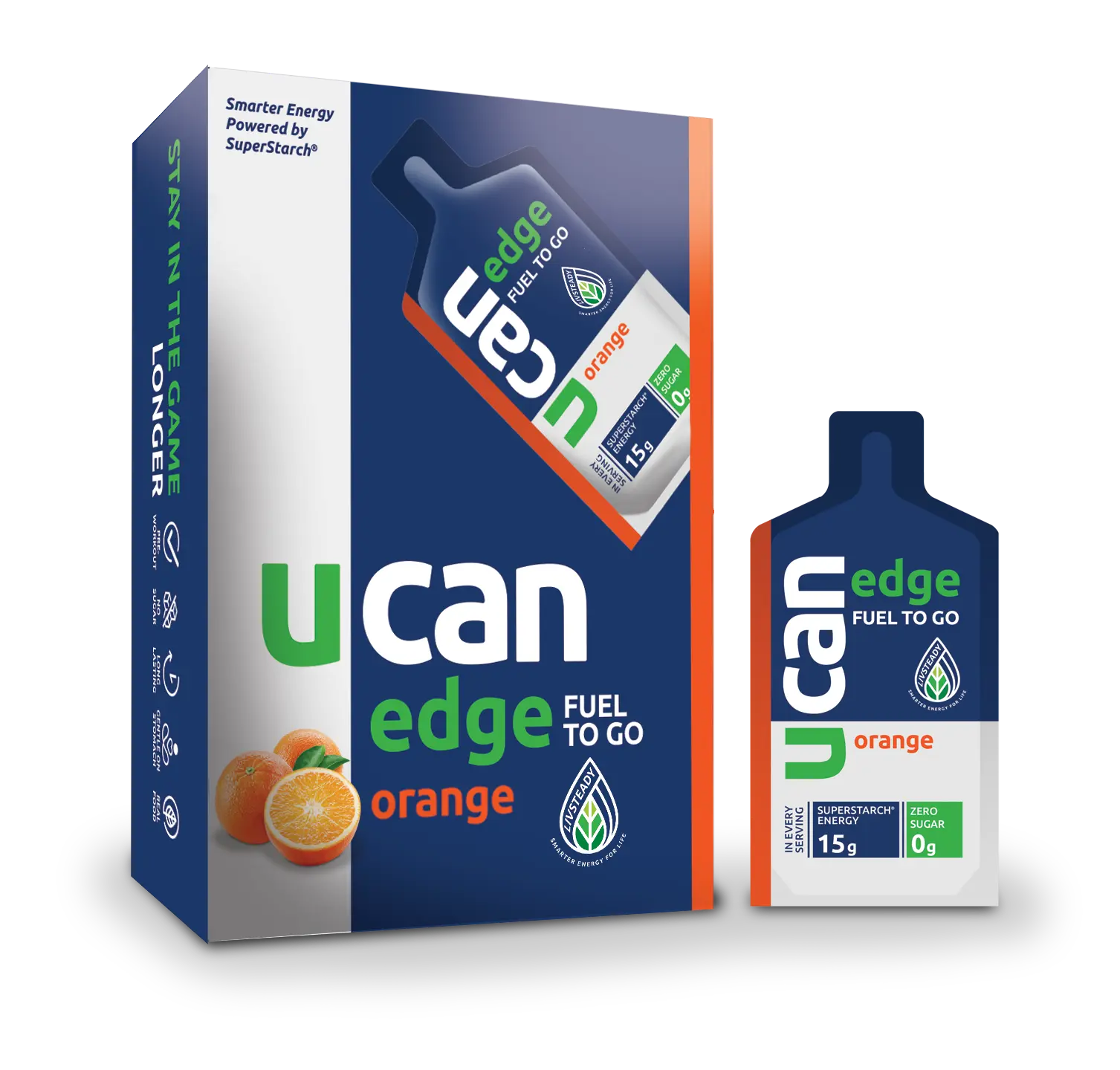
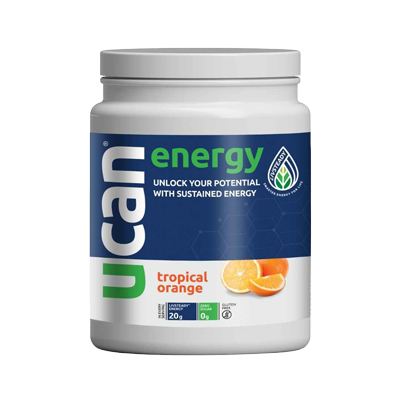
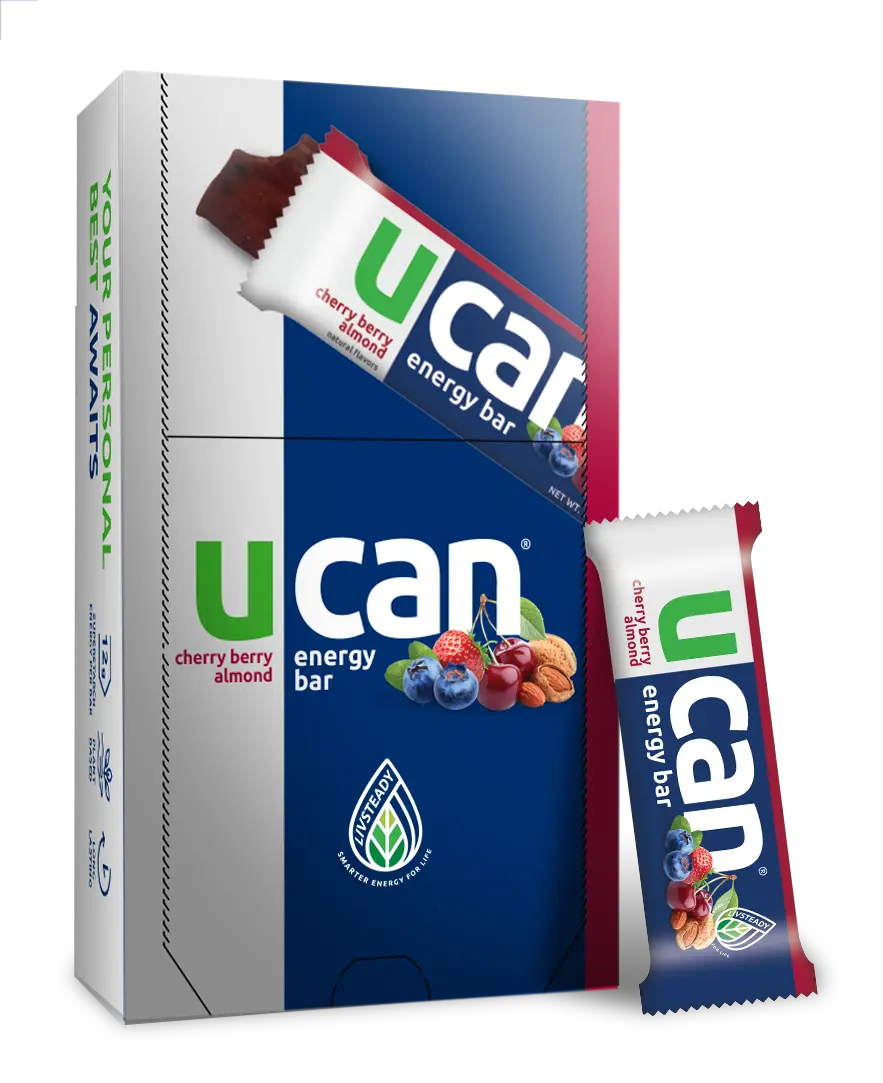
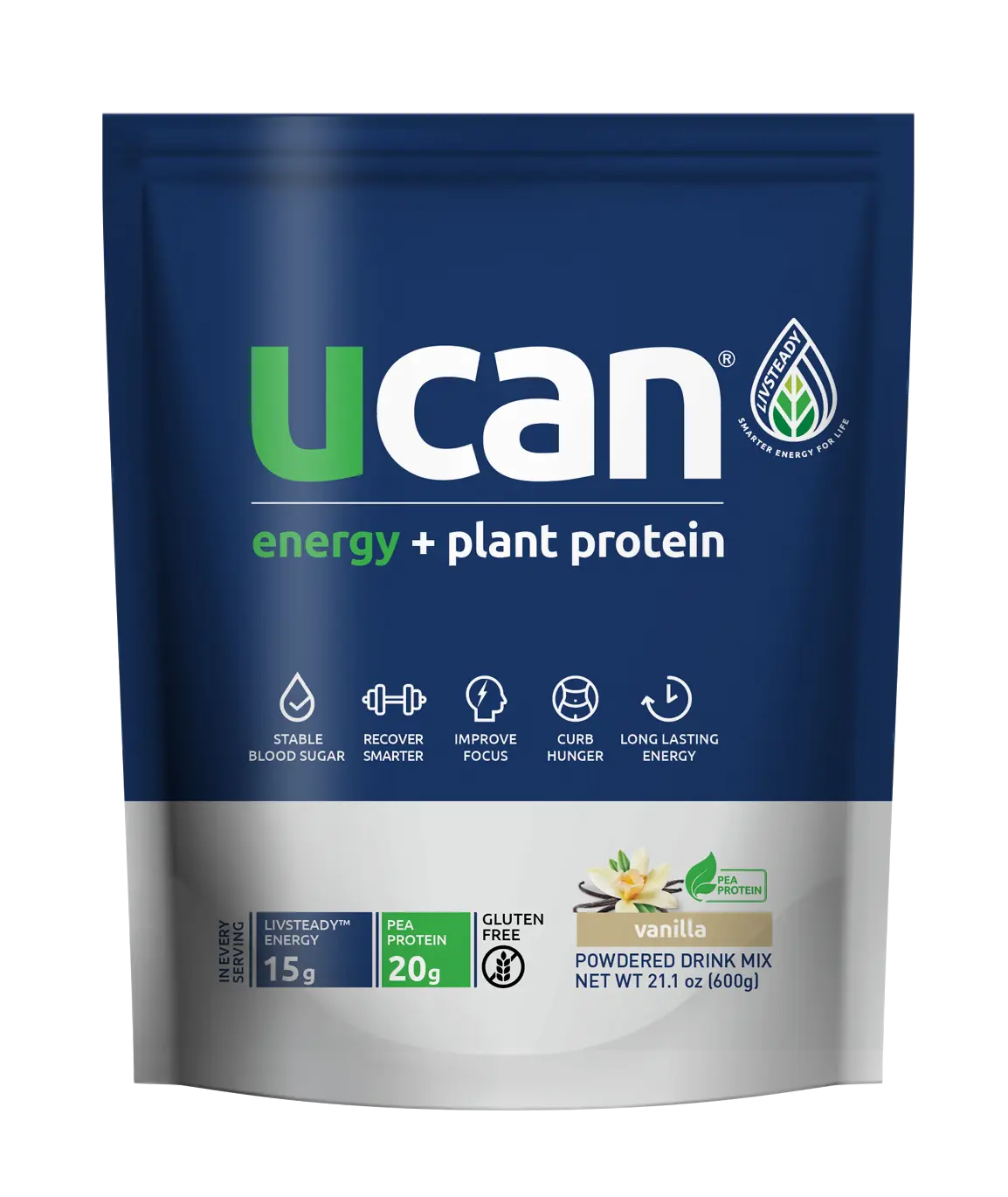
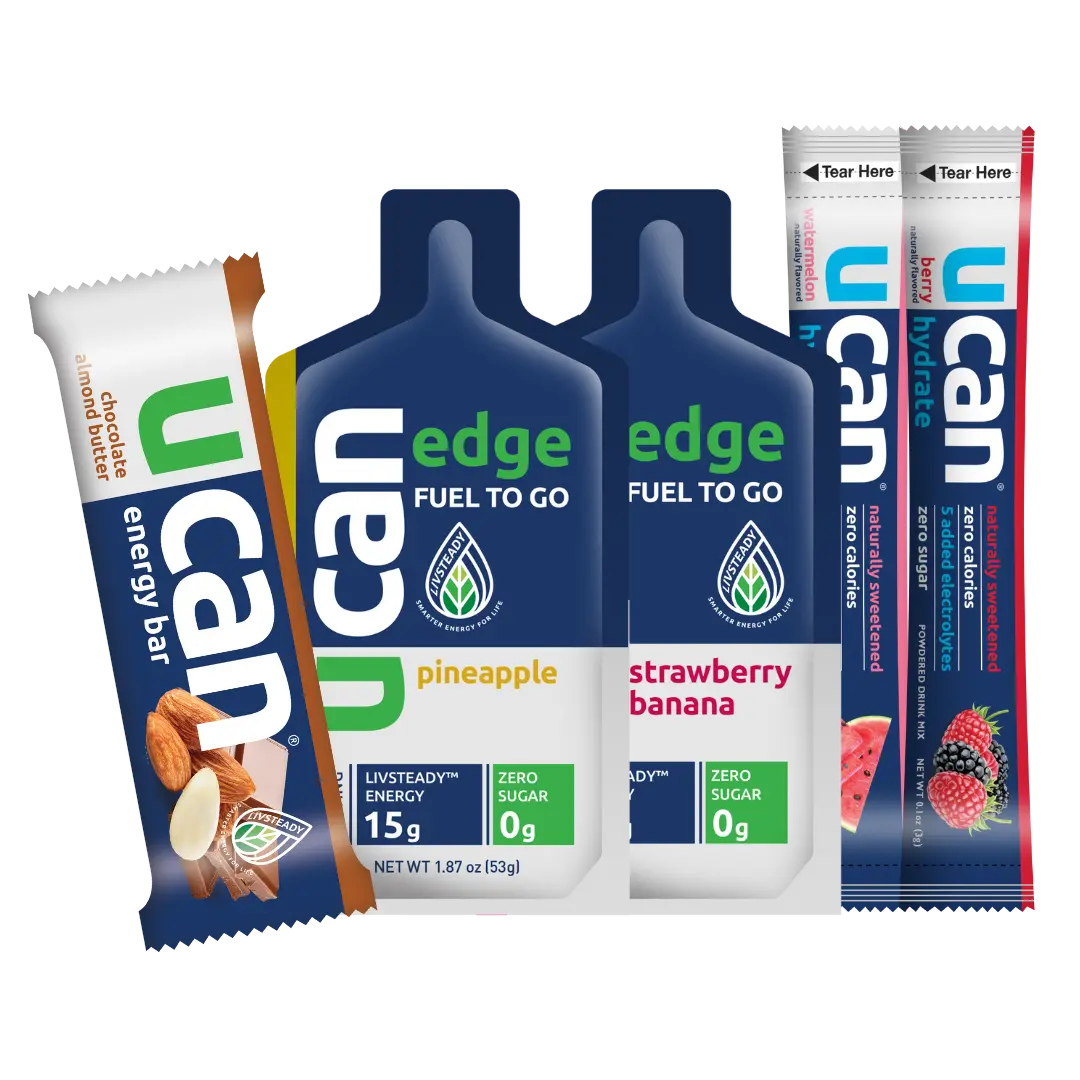
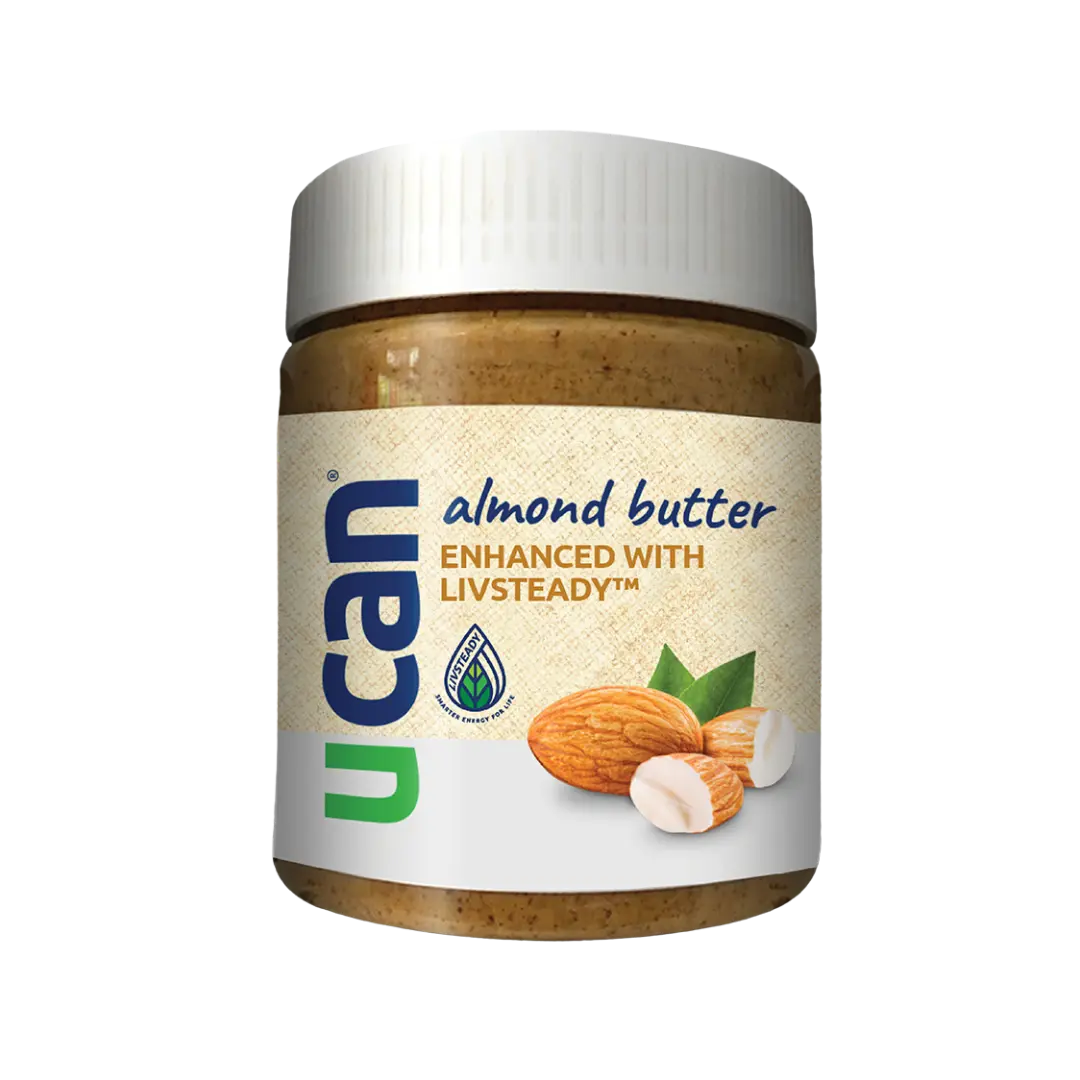
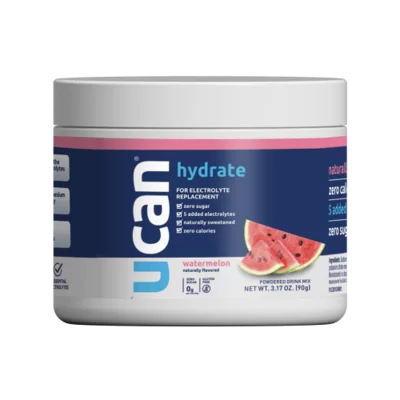
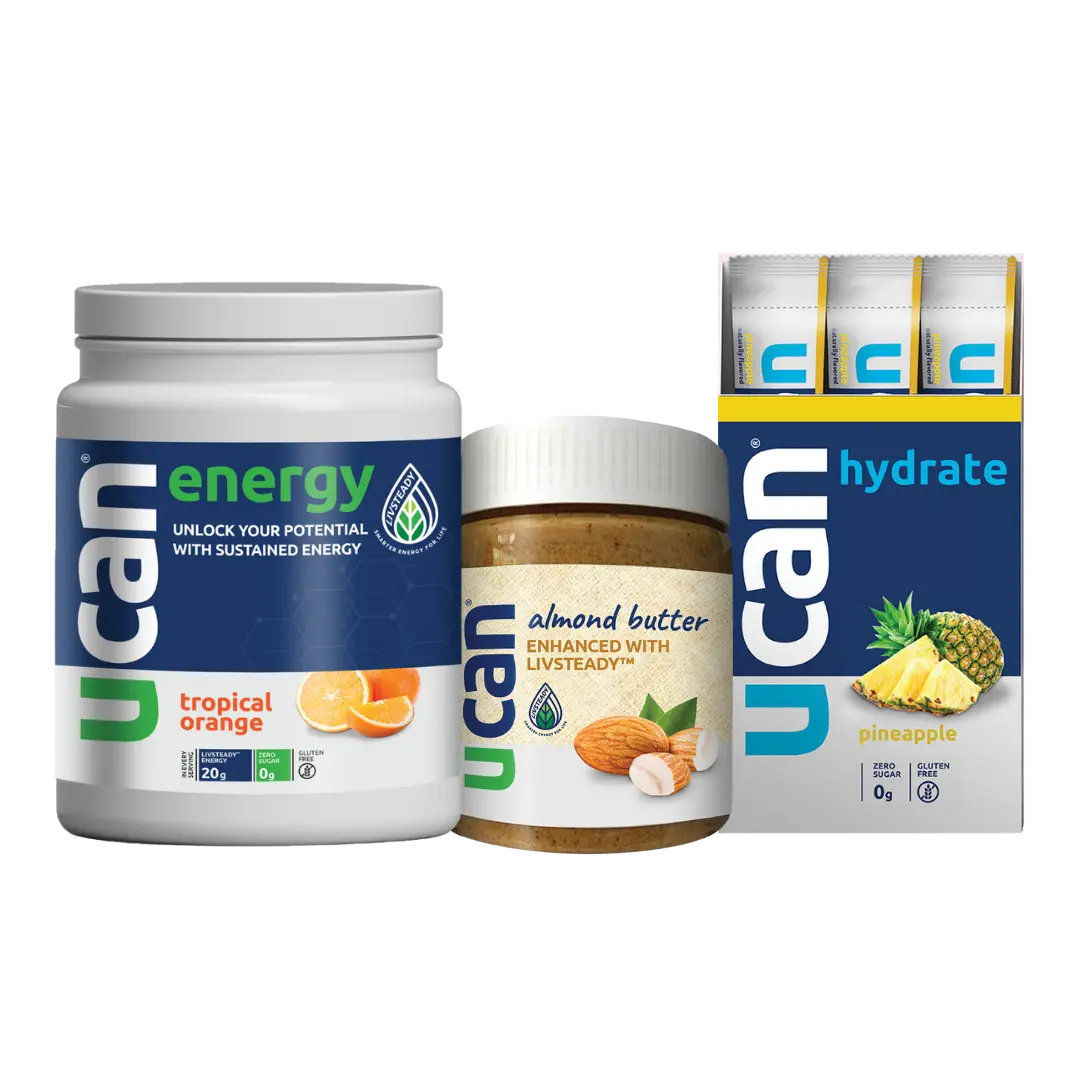
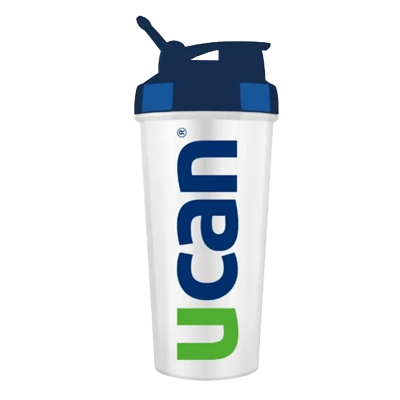
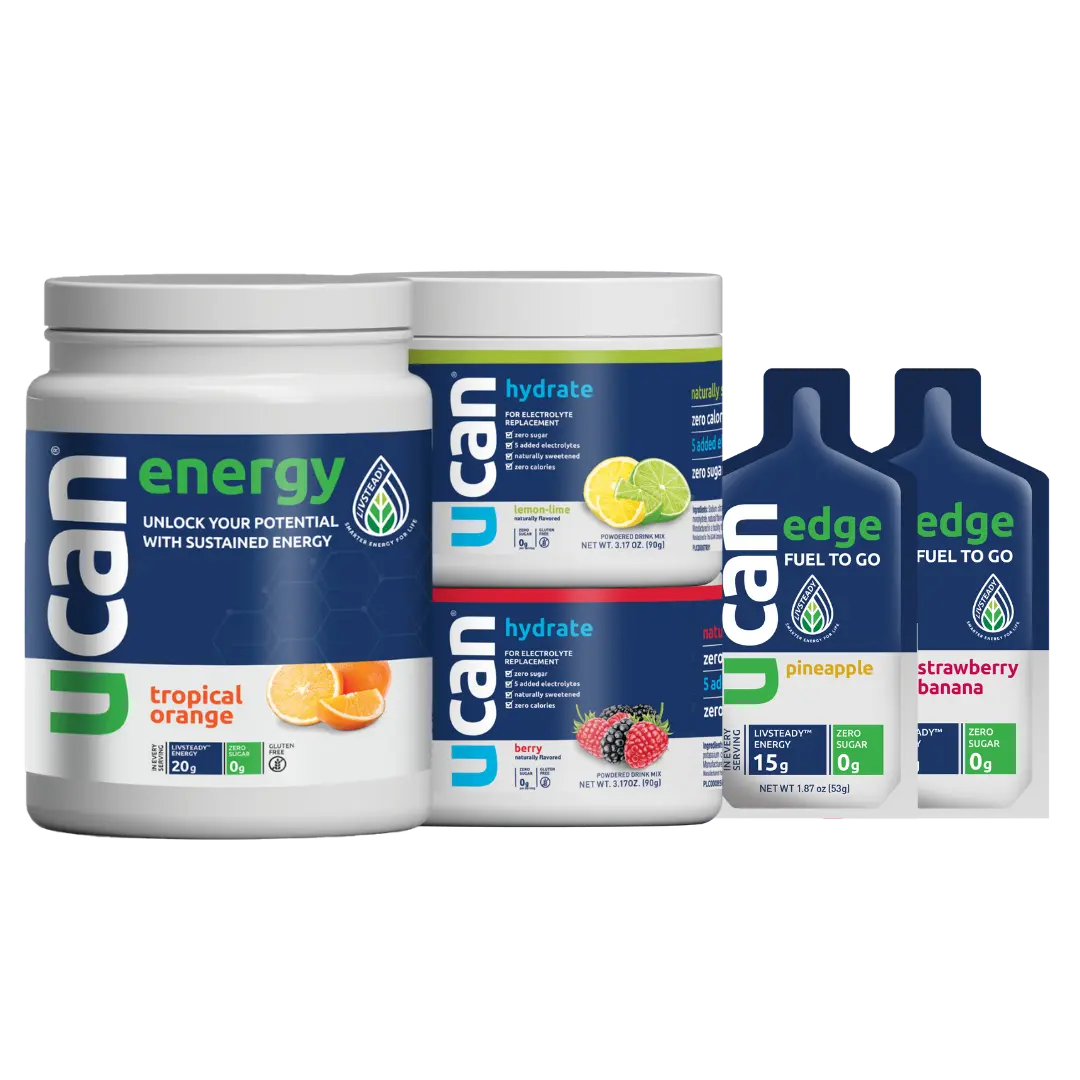




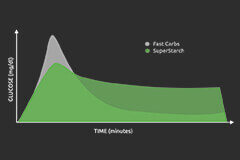

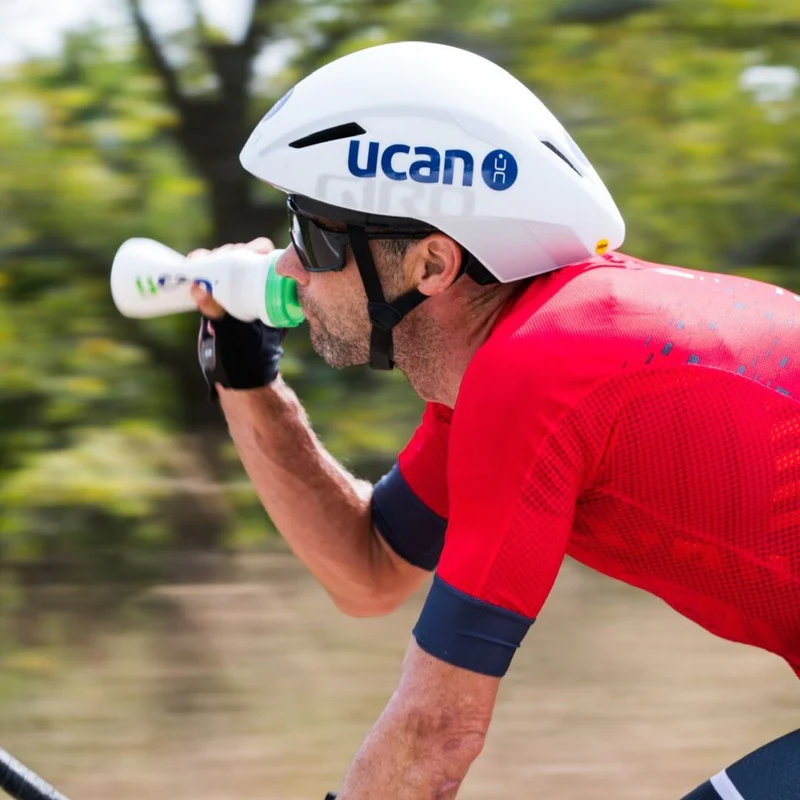


















Comments are closed